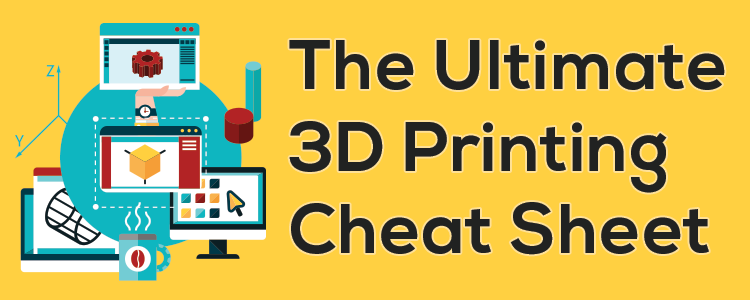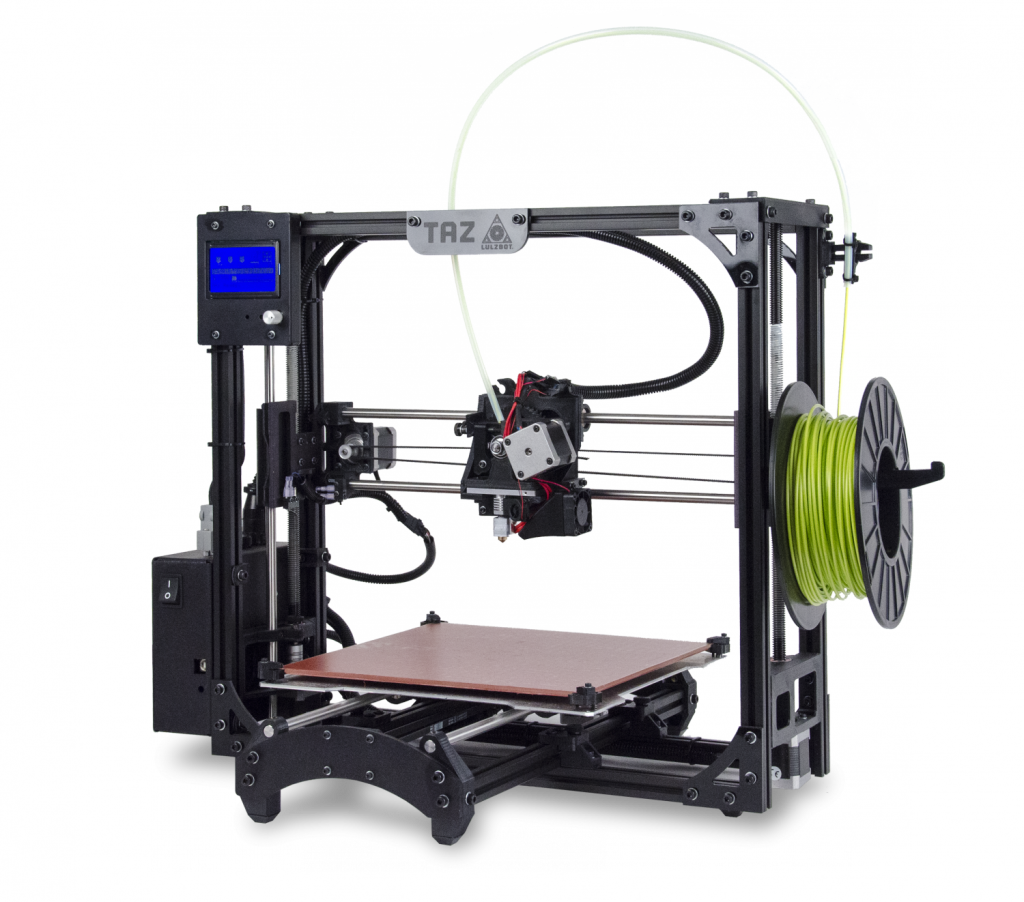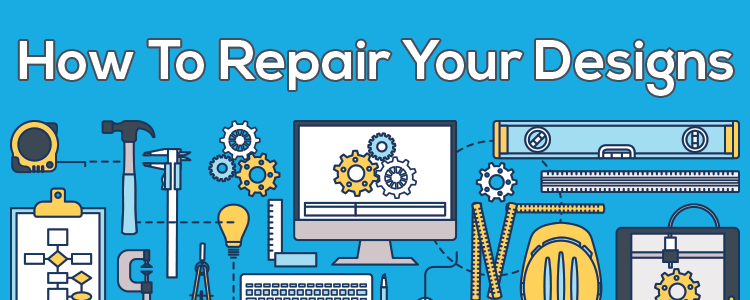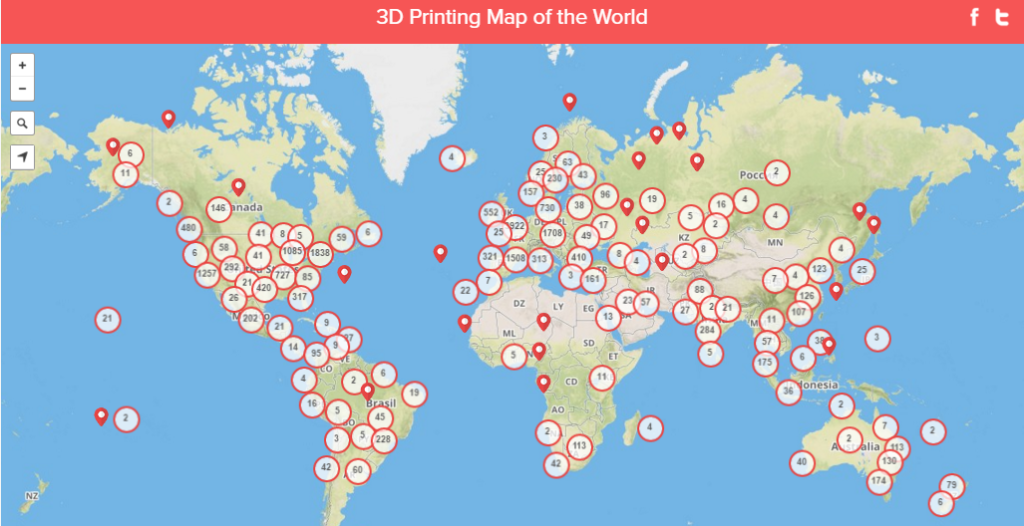 We’re hard pressed today to find someone, anyone, who doesn’t know at least a little bit about how 3D printing is changing the world in so many areas like manufacturing, space travel, and, most impressively—medicine. And yes, sometimes it seems like nearly everything is being 3D printed for one reason or another—from the luxurious to the mundane to the mindblowing—as we see hotels going up, cars being built, comfy shoes hitting the market, along with those other (say what??) items like 3D printed ears and noses, and liver tissue.
We’re hard pressed today to find someone, anyone, who doesn’t know at least a little bit about how 3D printing is changing the world in so many areas like manufacturing, space travel, and, most impressively—medicine. And yes, sometimes it seems like nearly everything is being 3D printed for one reason or another—from the luxurious to the mundane to the mindblowing—as we see hotels going up, cars being built, comfy shoes hitting the market, along with those other (say what??) items like 3D printed ears and noses, and liver tissue.
So, if you’re creative, innovative, you may be ready to try out this hot new technology for yourself, whether it’s because you got tired of people asking you what your hobbies are and having no answer, or because you are a savvy DIY’er ready to take it to the next level. 3D printers today have come down in price enough to make one gasp, and judging by industry data by companies like JeeQ and 3D Hubs, many novices indeed are simply going online and ordering themselves a machine. And on the day that surprisingly lightweight package arrives on your doorstep, you’ve entered the realm—and now 3D printing is going to change your world forever too.
After you get past the stage of staring at that glossy new piece of hardware that yes, belongs to you, if you’ve done your homework in ordering a user-friendly 3D printer with a reasonable amount of documentation and accompanying software, you are going to find that absolutely with a short amount of time in set up, you can then turn it on and go to town; in fact, you can have a 3D model in your hand within the hour. But once you’ve gotten over churning out and giving away figurines and phone cases, questions will build, from how to make your own designs to how to get help printing something with an alternative material—or where to find a community online to get more involved.
In compiling some of the best information in answer to what can be quite a long list, we turned to one of our favorite online platforms, as well as a great resource for user-based tips: AstroPrint. Whether they are helping you figure out a new app they’ve integrated into their platform or the subject of 3D printing in general, this is a dynamic company absolutely crazy about 3D printing—and they continue to bring us helpful information about design, printing, and how to actually enjoy it all along the way.
Recently, AstroPrint’s Dilanka prepared a great deal of helpful information for those who might just be getting started in 3D printing. Referring to it as his magnum opus of 3D printing tips—The Ultimate 3D Printing Cheat Sheet—Dilanka offers you a ‘buffet’ of information that he plans to keep adding to and updating, according to feedback. If you are becoming curious, involved, or are just downright passionate about 3D printing, most of this will interest you—and it’s fun too in comparing your thoughts and experiences with Dilanka’s, as outlined in a very helpful blog.
Buying a 3D Printer — if you haven’t gotten to this point yet, let’s start with a few great names suggested by AstroPrint. This is a short list of quality products, but let it be known that if you spend a few more hours investigating, you will find quite a range of printers to choose from and most with a number of features that will probably make you very happy. We recommend checking out these company websites, as well as looking at the volumes of information available on 3DPrint.com. Here is the short list:
It’s also a great idea to check out the 3D Hubs Printer Guide, which we wrote about not too long ago—and it’s an excellent complement to the information listed here—keep it in mind as a ‘must save.’
Where to find designs — As soon as you begin 3D printing, you’ll discover what seems to be an infinite world of 3D designs out there being shared. While there is certainly a great deal to be found just through using Google, as well as the Google Advanced Search, other makers have put so many hours into creating and tweaking models—and the design files are now right there on platforms like Thingiverse, for you to enjoy—and even customize for yourself. This is definitely my favorite, as well as my kids’ too, and as Dilanka points out, you will glean an enormous amount of information—as well as entertainment—from reading the comments sections. He’s always very correct in pointing out that there is no learning curve. If you doubt this, just point your own young ones to Thingiverse and set them free with the 3D printer. They’ll have the machine tied up for days—and their friends will be waiting to get in on the action too!
“The biggest strength of Thingiverse is the enormous amount of (free) user-generated designs and the active and enthusiastic community,” states Dilanka.
Next is STLFinder, which Dilanka ‘highly recommends’ and rates right up there with Thingiverse if you are looking for 3D models; however, this is an aggregator pulling from all the other sites, including Thingiverse too, of course. They offer an easy interface and you can find a whopping amount of design files here to peruse, tweak, and 3D print.
MyMiniFactory is a huge favorite, and not only do they offer a great library of files to check out and print, but they are extremely active in the maker community and there’s usually a fun challenge or contest to enter as well.
“MyMiniFactory is a free design repository that offers 3D Printable designs that are guaranteed to print. The designs are organized fairly well in intuitive categories,” states Dilanka. “A good portion of the designs on MyMiniFactory are listed by designers. While the site and design collection is pretty solid, the only negative would be having to register just to download a design.”
Youmagine is another great resource, offering an emphasis on open-source designs.
“While the site has a very clean interface and a lot of potential, the number of designs you’ll find here are not incredibly impressive,” states Dilanka. “The good news is that you will find a handful of high quality designs if you check out their featured section.”
Here are a number of other sites and repositories you may want to check out as well:
- Yeggi — another aggregator that indexes designs. You should find this to be a good, comprehensive search engine.
- CGTrader — here you will find a streamlined interface and search engine for models, along with a pretty sophisticated marketplace and ‘full-fledged platform’ for purchases from professional designers, computer graphics and VR.
- GrabCad — with over a million models to choose from, you should find great resources here, and as Dilanka points out, many of the designs were actually contributed by professionals and engineers so you may find great inspiration, and especially if you are working on a prototype.
- Sketchfab — this platform should offer you some great content, as well as allowing you also to upload models and embed them on the web. Be sure to check out their ‘Staff Picks.’
- 3DShap.es — this is a cool new search engine that allows you to search by shape! While the interface may not be as easy to use, many may find this platform fun and useful.
- 3Dagogo — affiliated with AstroPrint, this is a small repository that offers free, premium handpicked designs.
- 3DFileMarket — a new platform offering a search engine and repository, but it hasn’t been given a very good report via AstroPrint. It is described as noisy, filled with advertising, and unfocused—with ‘mediocre’ designs.
- TF3DM — you may find this is a good place to go for ideas, but as for a true resource, that is still up in the air.
- RedPah — you should find a great platform, interface, and work from talented designers here.
- Cults3d — here you will find free, premium designs—and if you are searching in a specific category, you may find this platform very helpful.
- Yobi3D — here you should find a great aggregator with a helpful interface and streamlined search engine.
Where to find helpful forums — If you have yet to begin reading and joining in forums, be sure to set aside a number of hours because it’s easy to get lost in reading, learning from others, and becoming inspired to start enough projects to last several lifetimes. We’re glad to see that Dilanka had us on the list, and with good reason, as 3DPrintBoard has a large number of active members (around 15,000) whom you can learn a lot from. Next he recommends the Reddit forum r/3DPrinting, a subforum with a great search option and a large community full of expertise. Beware though—this can be an opinionated bunch!
Other forums not to miss:
What are the best slicing programs? Most would probably agree that indeed Cura is the best slicing program, offering a great platform for novices or users on any level.
“I would say one of the biggest advantages to using Cura is that it uses slightly less material (than Slic3r) to achieve similar print quality,” states Dilanka. “Also, Cura might be better at support generation when using it’s “lines” option. All in all, it might take some trial and error to figure out the best settings, but Cura is definitely a proven (and robust) slicer.”
As a special note, Cura is also available to you at AstroPrint.
Also highly recommended is Simplify3D, ‘arguably the best slicer that is currently available.’ While it may be expensive, if you are dealing with support structures, you should find this well worth the cost, and will enjoy great print quality as well.
Other slicing tools you may want to look into:
And what about those files that need fixing? You surely can’t go wrong using Blender. This powerful program offers sophisticated tools for fixing problems, as well as numerous other options. There is a learning curve involved, but it’s well worth the time and effort. NetFabb is also a great option for fixing STL, OBJ, 3MF or VRML files automatically, using a cloud-based service. It’s free, powerful, and also highly recommended.
“Net Fabb also has a shareware desktop application if you are willing to shell out some cash,” says Dilanka.
Other great options you really should also explore are:
- MeshMixer
- Tinkercad
- Simplify3D (they also have a great troubleshooting guide)
And what about CAD design…should I be afraid? If you’ve done your homework here, then you probably keep hearing about learning curve concerns—and you are probably really envying those who are well-versed in computer-aided design.
“Once you get decent at CAD however, you will never look at the world the same way,” says Dilanka. “It’s almost a superpower that will enable you to create literally anything – your imagination is your limit. Not to mention, you won’t have to spend a single dollar on manufacturing!”
Blender again offers great capabilities and is extremely popular, powerful, and recommended. Although Dilanka shares that you will probably experience a ‘steep learning curve,’ you will be amidst the cream of the crop once you get there—and if you see a long-term commitment to 3D modeling, this is well worth it.
“The biggest strength for software like Blender is its free form modeling ability, which is much better for animations and pretty renderings than designing 3D Printable stuff,” says Dilanka. “Finally, if you plan on using Blender, a good forum is a must.”
OnShape, designed by former members of Solidworks, is another top option. It’s streamlined, user-friendly, and powerful.
FreeCAD is also highly recommended as an ‘open source, multi-platform, and full fledged parametric 3D modeling software.’ It’s powerful and versatile, features many tools, and is definitely worth exploring.
Other CAD design software you may want to consider as well:
What if I need someone else to handle 3D printing for me? Well, there’s certainly no shortage of help in that department. While there are numerous options, and they can all be highly subjective, it would seem that you may want to check out Shapeways first if you are looking for an extremely popular service bureau that offers SLS printing.
“One thing to keep in mind is that most designs you find on Thingiverse are NOT designed to be printed on a SLS printer – those are designed to be printed on cheap, consumer, FDM 3D printers,” says Dilanka. “Why am I telling you this? Because if you use one of those designs and send them to Shapeways, it might cost extra because the designs are not optimized for SLS printers.”
3D Hubs is another extremely popular service, offering a local spot for your model to be 3D printed for you. If you need a custom print produced or are using alternative materials—or need an industrial printer—this is a great service.
“You should also be aware of the limitations of 3D Printing when contacting a local hub though. For example, don’t expect a design to come out perfect if you just downloaded it from Thingiverse,” says Dilanka. “In any case, 3D Hubs is an excellent place to order custom prints.”
Sculpteo and i.materialise are also great options, very popular, and excellent for custom designs. Also consider checking out the following:
Where should I buy filament? Here, you will find a long list of suggestions, but Dilanka recommends using HatchBox3D and/or PrintedSolid first for PLA and ABS purchases, as well as taking a look at colorFabb and ProtoPasta for custom filaments. Other great companies to check out are:
Who should I read and watch? Obviously when you are looking for news, check with 3DPrint.com first! In terms of educational and project-oriented tutorials and more though, there is a wealth of information out there. From the quite popular Joel the 3D Printing Nerd, offering up a long list of 3D printing projects, to the WTFFF?! 3D Printing tutorials by husband and wife team Tom & Tracy Hazzard, you can find infinite choices not just for learning but great entertainment and fun as well.
Other entertaining and helpful outlets are:
As a final note, there are some ‘must have accessories’ you may want to consider.
“You should also probably get E3D Hardened Nozzles if you are printing with specialty filament,” states Dilanka. “Specialty filaments are generally very abrasive on your nozzle and not having a hardened nozzle will wear it out quickly. Glow-in-the-Dark filament for example contains strontium aluminate, which is an abrasive compound that will wear your regular old nozzle out. You might also find Toybuilder’s Filament Monitor to be useful.”
For adhesion issues, you will want to shop around for what suits you best, but these are the best products to check out:
For finishing, you will want to invest in a butane torch for PLA products, as well as a good form of glue for any parts that need to be put together.
If you’ve already perused some of the sites and examined some of the information presented here, you’ll probably find it quite interesting in comparison with your own experiences, as well as enjoying another perspective. The AstroPrint blog by Dilanka offers a true wealth of information, and as he recommends, you can pick and choose what you’re interested in learning about depending on what project you might currently be involved with. You may also have valuable feedback on any of the subjects, which is. Discuss in the AstroPrint 3D Printing forum over at 3DPB.com.
Subscribe to Our Email Newsletter
Stay up-to-date on all the latest news from the 3D printing industry and receive information and offers from third party vendors.
You May Also Like
3D Printing Financials: Fathom Struggles in Financial Quicksand During Critical Transition
Facing a year of key transitions and financial pressures, Fathom (Nasdaq: FTHM) has filed its annual report for 2023 with the U.S. Securities and Exchange Commission (SEC). The document outlines...
Latest Earnings Overview for Australian 3D Printing Firms Titomic and AML3D
Australian 3D printing manufacturing firms Titomic (ASX: TTT) and AML3D (ASX: AL3) reported their financial results for the period from July to December 2023, marking the first half of their...
3D Printing Webinar and Event Roundup: April 7, 2024
Webinars and events in the 3D printing industry are picking back up this week! Sea-Air-Space is coming to Maryland, and SAE International is sponsoring a 3D Systems webinar about 3D...
3D Printing Financials: Unpacking Farsoon and BLT’s 2023 Performance
In the Chinese 3D printing industry, two companies, Farsoon (SHA: 688433) and Bright Laser Technologies, or BLT (SHA: 688333), have recently unveiled their full-year earnings for 2023. Farsoon reported increases...




































